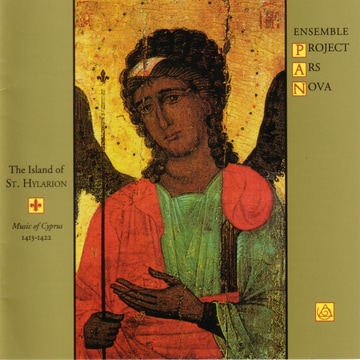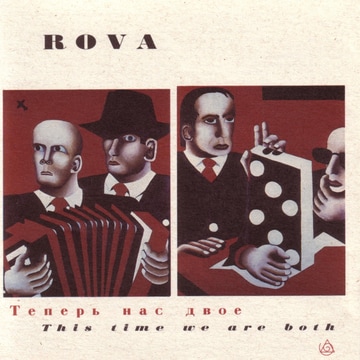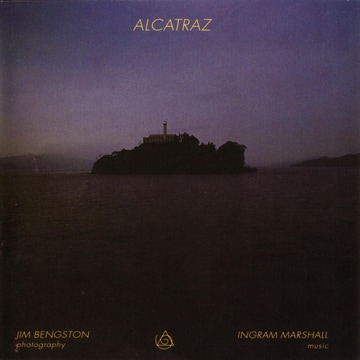|
The Island of St. Hylarion
Music of Cyprus, 1413-1422: Michael Collver, countertenor, corno muto; John Fleagle, tenor, harp; Shira Kammen, vielle; Laurie Monahan, mezzosoprano; Crawford Young, lute; with guests Peter Becker, Karen Clark-Young, Randall Cook, Steven Lundhal, Margaret Raines. This is without a doubt the best recording of the Cypriot-French music to date. --Historical Performance: The Journal of Early Music America Virtually all of the music in this recording comes from one of the most neglected but fascinating sources of late Medieval music, the richly copied manuscript J.II.9 of the Biblioteca Nazionale in Turin, written between 1413 and 1422 in Cyprus. This manuscript is the sole witness to a brief but extraordinary flowering of western art music in Cyprus at the end of the fourteenth and the beginning of the fifteenth century. The Cyprus codex begins with a fascicle of plainsong, including several mass cycles as well as offices for St. Hylarion and St. Anne, both of whom are particularly venerated in Cyprus. Then follow a series of polyphonic glorias and credos, several of which are arranged in pairs, a cantus firmus mass lacking the agnus dei (added by a later scribe), 41 isorhythmic motets, 102 ballades, 43 virelais, and 21 rondeaux. The texts of the secular works and eight of the motets are French and reveal familiarity with the poetry of Machaut and his contemporaries. The rest of the music uses latin texts, including a thinly veiled imitation of a motet text by Philippe de Vitry. All the works are anonymous and unique to this codex which stands as one of the few medieval manuscripts that solely represents the musical output of a single court and chapel. In spite of the uniqueness of this repertory it has been neglected by scholars and performers. It is seldom glamorous to deal with anonymous works, and yet the artists responsible for this music were people of uncommon imagination and power. One among them produced a cycle of motets related to the great "O" antiphons of the week before Christmas ending with the vigil motet, "O sacra virgo virginum/Tu nati nata suscipe", and the Christmas motet, "Hodie Puer nascitur/Homo mortalis firmiter". This cycle is clearly a single unit and rivals in scope anything being composed in Europe at the time. Available here: iTunes This Time We Are Both
Larry Ochs, tenor and sopranino; Jon Raskin, baritone; Bruce Ackley, soprano; Steve Adams, alto and sopranino; saxophone quartet recorded live on tour in Russia, 1989 Extremely fresh music contingent on just the kind of quick-thinking, big-picture inventiveness that Rova carries off so seamlessly: * * * * * --Down Beat The 12th annual Leningrad Jazz Festival was well underway when Rova Saxophone Quartet inaugurated its 1989 tour of the Soviet Union with the first of two performances in Lensoviet Concert Hall. Six and a half years had passed since Rova had first penetrated the "Iron Curtain" for a three-city Soviet tour, documented on the hatART recording "Saxophone Diplomacy" and a video of the same title. In June, 1983, Rova had been invited by the offically banned Contemporary Music Club of Leningrad, and had been forced to play literally underground - in the basement of the Dostoevsky Museum. By mid-November 1989, much had changed: Rova was being sponsored by Gosconcert, a department in the Soviet Ministry of Culture, and its 23-member entourage of musicians, friends, family, writers, artists, poets, photographers and engineers, was being escorted by young Russian guides who were openly critical of both their government and the havoc wreaked on their society by 70 years of state socialism. We heard frank stories about black market car lots, ten-year waiting lists for apartments, the cultivation of "connections" for special favors, and the failure of Leninist ideal. "Next they are going to run out of electricity," quipped our tour leader, Misha, when our bus transportation was jeopardized by a gasoline shortage in Latvia ... Available here: iTunes HDtracks Alcatraz
for synthesizers, buoys, birds, fog horns, singing, gambuh flute and cell doors in the resonant spaces of the prison, with Jim Bengston's collaborative photographs Some of the music is mesmeric, even eerie, and some is contemplative and meditational. At other times it is more insistently and rhythmically violent as befits the memory of such a forbidding and foreboding place as Alcatraz. --CD Review Alcatraz is a truly collaborative work. I had long talked with Jim Bengston, a friend since the sixties, about the possibility of combining image with music in a meaningful way. We agreed that there had to be a subject which the photography and the music must separately illuminate; but they ought to inform each other as well. He visited San Francisco on a regular basis when I was living there in the early eighties and somehow the idea of the lonely island as a subject crept into our collective consciousness. Jim's penchant for photographing open, stark landscapes and looming, lonely places seemed perfect for Alcatraz; it appears, in its semi-ruined state, to be an extension of the natural world which surrounds it. My fascination with the sounds of the maritime environment around San Francisco Bay, as witness my "Fog Tropes" of 1982, made the "soundscape" of Alcatraz a natural attraction for me. Beginning in the Fall of '82, Jim photographed out on the island on numerous occasions over a period of two years, and I sallied forth on several of these expeditions with tape recorder and microphone, recording the sounds of buoys, birds and fog horns as well as singing and gambuh flute playing in some of the resonant spaces of the prison. I also captured the famous roar of the cell doors' mechanized closings - this chorus of metal echoing through the wildly reverberant spaces of Alcatraz is probably the perfect sound print of the desolation and utter finality of the place. For me the music and pictures have always exuded meaning, although I am loath to be specific, leaving it to those regarding the pictures and listening to the music to find their own hermeneutics. --Ingram Marshall Available here: iTunes |
New Albion Records, Inc.Archives
October 2010
|



